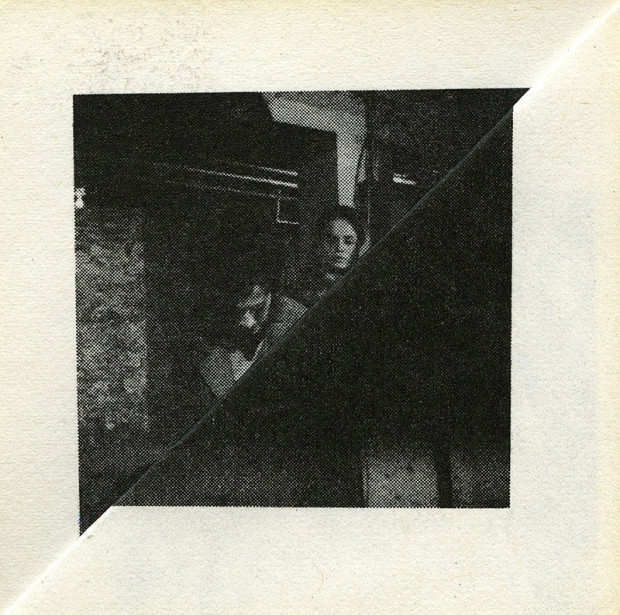Erica Baum, The Paper Nautilus
Bureau
178 Norfolk Street
September 7th to October 26th, 2014
Good abstract visual poetry exists. Take Erica Baum’s The Paper Nautilus at Bureau. In square photographic prints, Baum zooms in on the dog-ears on illustrated book pages– cropping the frame so that the square photograph is split diagonally from bottom left to top right corner, by the page crease. The dog ears, and the corner of the page beneath them, retain only triangular corners of illustrations and photographs. There’s no linear meaning to be drawn from these works, and yet, the mismatched pairings of triangles form a stable visual rhythm. The abstract squares resemble Josef Albers’s color studies, only in grayscale, and printed out on a dot matrix printer.
The show itself has an earnest feel to it—most of the prints are small, and have been allotted a fair amount of space for contemplation. In one of the dog-eared images, we see a man’s downward gaze lined up with an undefined space; in another, we see what appears to be soldiers in a park butted up against a picture fragment so small that it’s unintelligible. In each case, image fragments create half narratives and abstracted color fields (mostly in grey); in some instances, candles flicker or legs swing up, in others, light grey meets lighter grey. After a bit of time looking at these works, you get the sense that virtually any narrative is pure construction.
Nowhere is that more obvious than in the back gallery, which displays three large prints of a different series—single images of blown-up View-Master reels—on its longest wall. In this series, all of the images on the View-Master reels are blackened, leaving only the text to construct a narrative. In one reel, it’s possible to discern an enemy plot against the world’s first space hero Buck Rogers. Upon seeing this, I spent some time trying to discern whether there was any narrative connection between the story and image fragments on both the View-Master reels and the pages; was the artist trying to tell me something more specific? Nothing matched up neatly. Baum, I decided, is interested in the fragments themselves, not their specific meaning.
That ambiguity doesn’t always pay off. I spoke to one friend afterwards who complained that the show made him feel guilty for not looking at the images carefully enough. I too, felt this anxiety. The careful assembly of printed matter—a medium used to impart specific messages—makes you assume the work has more to say than it does. That’s not ideal, but within the world of printed abstract collage, there’s a case to made for the work. There’s real transformation of material here, and while it’s not overly poignant, it’s at least visually satisfying.




Comments on this entry are closed.